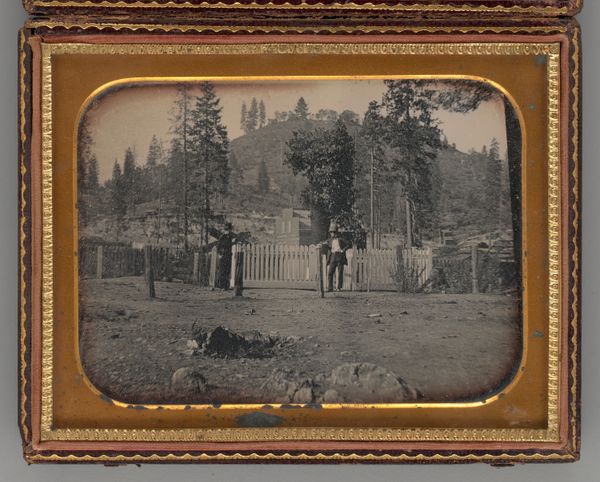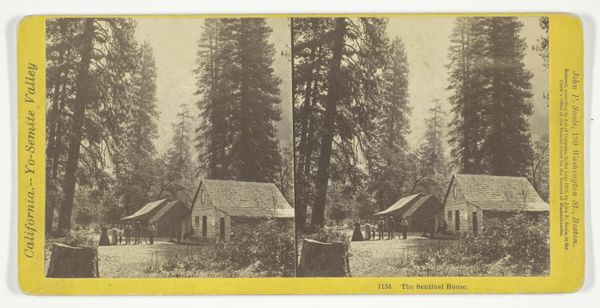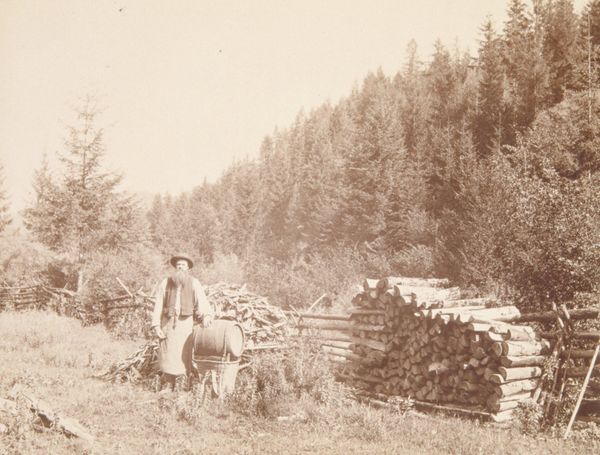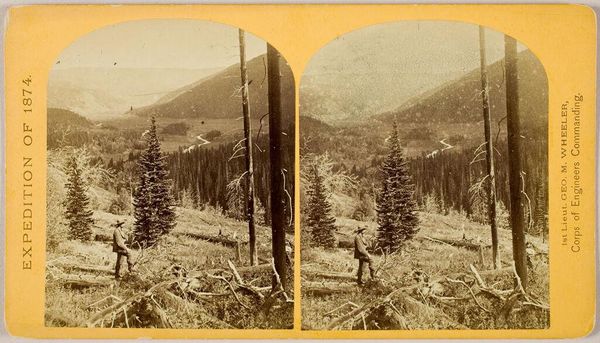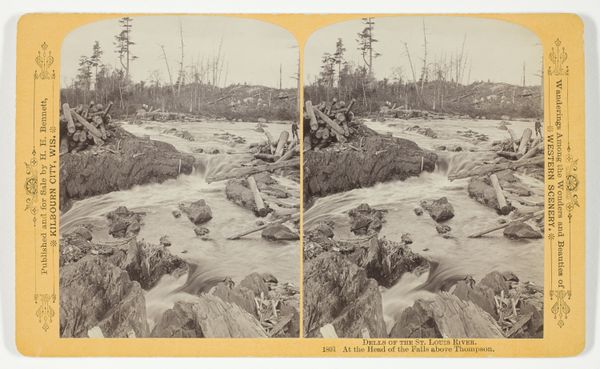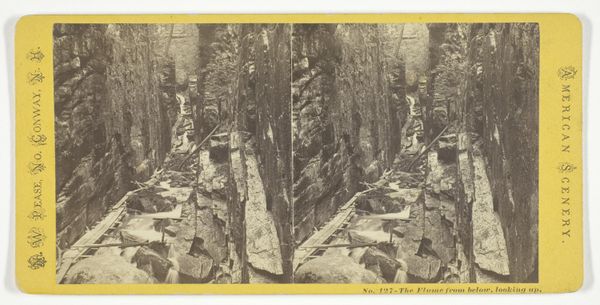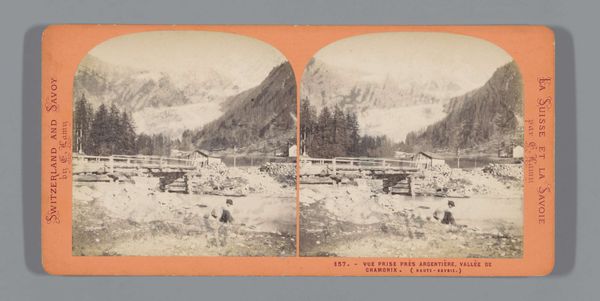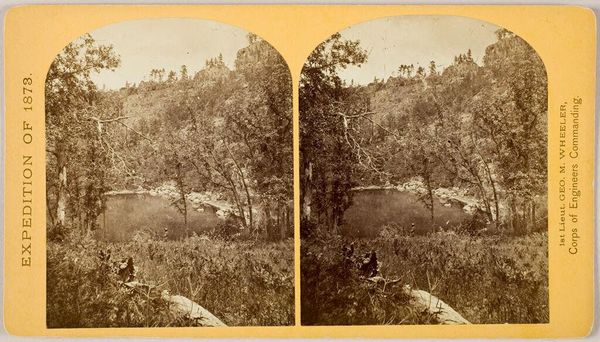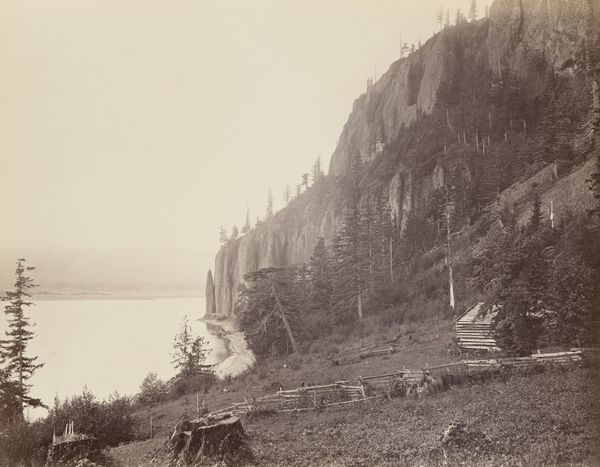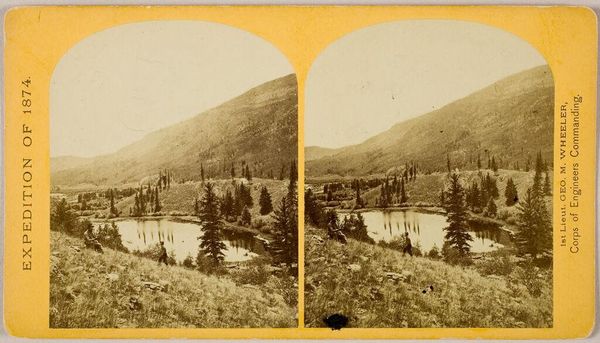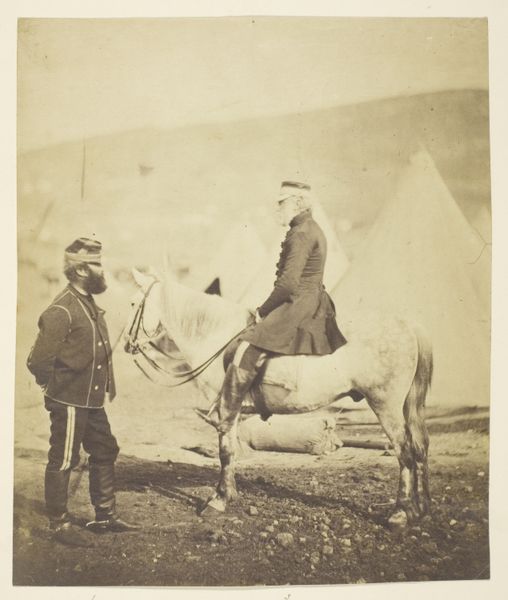
Crescent Lake, at head of the Merced River, Mariposa Co. 1870
0:00
0:00
Dimensions: 8 × 7.9 cm (each image); 8.6 × 17.4 cm (card)
Copyright: Public Domain
Curator: Here we have John P. Soule's 1870 stereograph, "Crescent Lake, at head of the Merced River, Mariposa Co." currently residing here at The Art Institute of Chicago. What strikes you first about it? Editor: This photo, in its quiet way, is whispering stories of solitude. I mean, look at that horse—or is it a mule?—its stillness, echoed by the figure beside it. It is almost melancholy. Are they resting, or just utterly alone together? Curator: Note the verticality of the trees and their repetitive, almost rhythmic placement in relation to the glassy horizontal lake. Consider how the artist balances positive and negative space. He creates a clear structure where nature—and the photograph—exists as its most serene. Editor: Yes, there's that classic pictorial landscape—like an idealized theater backdrop almost, especially in this sepia tone—but I still can't get past that pair. It gives me such mixed feelings. Nostalgia tinged with longing... It reminds me of Edward Hopper's figures for some reason. Is it the silence? Curator: It's an interesting comparison. I think we can discuss realism in both Soule and Hopper, as an objective and accurate representation of the natural world and lived experiences. Soule presents us with a scene of tranquility, meticulously composed and grounded in sharp tonal relationships. Editor: That’s true! Look how the highlights glimmer on the water… almost too still, if I'm honest. It borders on romantic, which is maybe why the figures are important; that's how the landscape of monumental nature is populated here in America. To witness it or take a journey to see it for oneself. What do you make of its impact? Curator: I appreciate the depth this image reveals in its tonal complexity, highlighting Soule's attention to detail. His meticulous execution is further proof of photographic realism at its finest. Editor: I can definitely appreciate that—it’s a timeless technique to capture transient beauty with enduring impact! The simplicity and starkness make it more profound. It asks me to find the beauty of loneliness without forcing it.
Comments
No comments
Be the first to comment and join the conversation on the ultimate creative platform.
